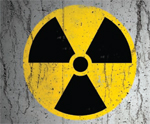
Nuclear Protection
State-of-the-art products come from international consortium
- By Katharina Geutebruck
- Jul 01, 2010
The International Special Training Center,
near Obninsk in the Russian Federation,
includes a training facility for the protection
of nuclear materials and installations.
The facility opened in May 2009, following
an extensive upgrade.
Guests recently had the opportunity to tour the
indoor and outdoor training and testing grounds
and the array of new security equipment provided
by manufacturers in the United States, Canada,
Israel, Italy, Japan, France, Germany, Russia and
the United Kingdom.
State-of-the-Art Protection
The ISTC is a national certification and testing laboratory
for physical protection equipment for Russian
power plants and engineering structures. Set up in
1993, the goal of the intergovernmental cooperation
between the United States, Russia, the European
Union and Japan was to redirect former Soviet
weapons scientists to explore peaceful research and
reduce proliferation of the mass destruction weapons
technologies.
The center supports a wide variety of science and
technology projects in biotechnologies and the environment
as well as nuclear studies and the improvement
of nuclear safety.
“Besides always being networkable and open for
integration, the systems are particularly suitable
for this kind of application because of their video
and alarm management characteristics,” said Lev
Datsenko, Geutebruck’s regional manager for Eastern
Europe. “This will ensure that operators have
complete control of extensive and complex installations.
An additional attraction is that their video
encoding is so fast that there are no latency problems
so users get real-time handling of speed dome
cameras and pan and tilt systems.”
Recent Upgrades
With Canada’s support through its Security Fund,
the International Atomic Energy Agency has been
able to upgrade facilities at Obninsk. This is where
operators and inspectors of physical protection
systems at nuclear facilities from the former Soviet
Union and other IAEA member states receive practical
training and newly developed equipment is
tested and approved for use in the field.
To ensure that its training on combating attack,
sabotage and theft of nuclear materials is as realistic
as possible, the center now has a range of security
equipment typical of current nuclear installations.
Applications at the site include Geutebruck’s re_porter
and GeViScope video security platforms, which
have been integrated with a large number of thirdparty
systems, including person and vehicle access
control systems, and a variety of different intruder
and perimeter detection facilities to simulate the
complex systems used in nuclear plants.
The center also employs a pan-and-tilt camera
system at the outdoor training area. This color camera
system also is equipped with an IR spotlight, but
the system can incorporate a CCD camera and a
thermal imaging cameras to enable
the identification of intruders in fog
and smoke.
About the Author
Katharina Geutebruck is the managing
director at Geutebruck GmbH.